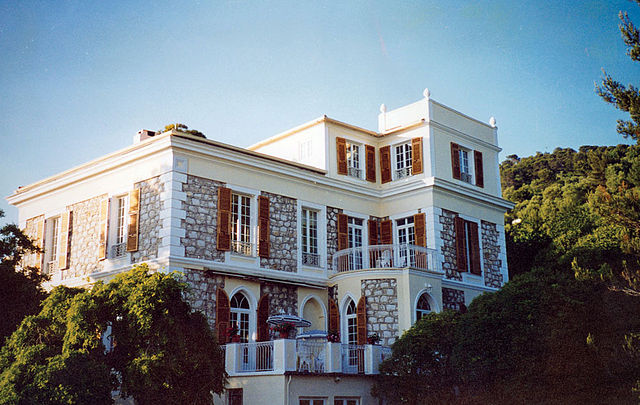Loading AI tools
French astronomer (1879–1956) From Wikipedia, the free encyclopedia
Henri Jacques Chrétien (French pronunciation: [ɑ̃ʁi ʒak kʁetjɛ̃]; 1 February 1879, Paris – 6 February 1956, Washington, D.C.)[1] was a French astronomer and an inventor.


Henri Jacques Chrétien | |
|---|---|
 Chrétien at the Fourth Conference International Union for Cooperation in Solar Research at Mount Wilson Observatory, 1910 | |
| Born | 1 February 1879 |
| Died | 6 February 1956 |
| Nationality | French |
| Scientific career | |
| Fields | Astronomy |
| Institutions | Nice Observatory École supérieure d'optique |
Born in Paris, France, his most famous inventions are:
- the anamorphic widescreen process, using an anamorphic lens system called Hypergonar, that resulted in the CinemaScope widescreen technique, and
- the co-invention, with George Willis Ritchey, of the Ritchey–Chrétien telescope, an improved type of astronomical telescope, employing a system now used in virtually all large research telescopes.
He spent part of his early astronomical career at the Nice Observatory, which was close to his house, the Villa Paradou. The Villa was built by famous French architect Charles Garnier[2][citation needed] who also built the Nice Observatory and both the operas of Paris and Monaco. In 1995, the abandoned villa was acquired by the artist Rainer Maria Latzke, who restored it and added new murals to the existing frescoes.
Chrétien was one of the founders of the Institut d'optique théorique et appliquée and professor at the French "grande école" SupOptique (École supérieure d'optique).
Seamless Wikipedia browsing. On steroids.
Every time you click a link to Wikipedia, Wiktionary or Wikiquote in your browser's search results, it will show the modern Wikiwand interface.
Wikiwand extension is a five stars, simple, with minimum permission required to keep your browsing private, safe and transparent.